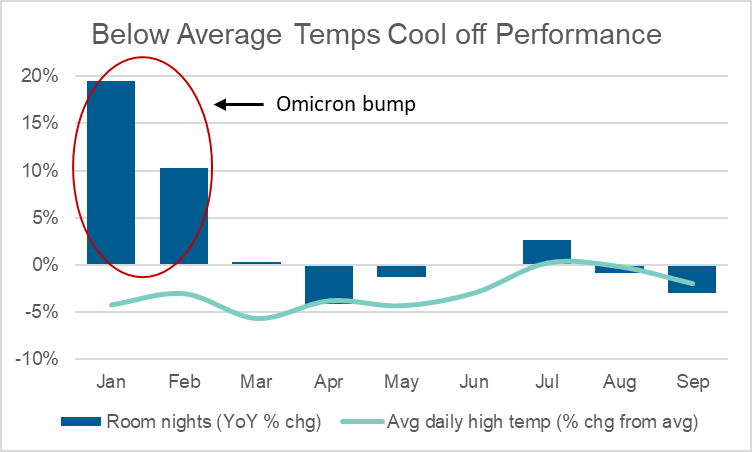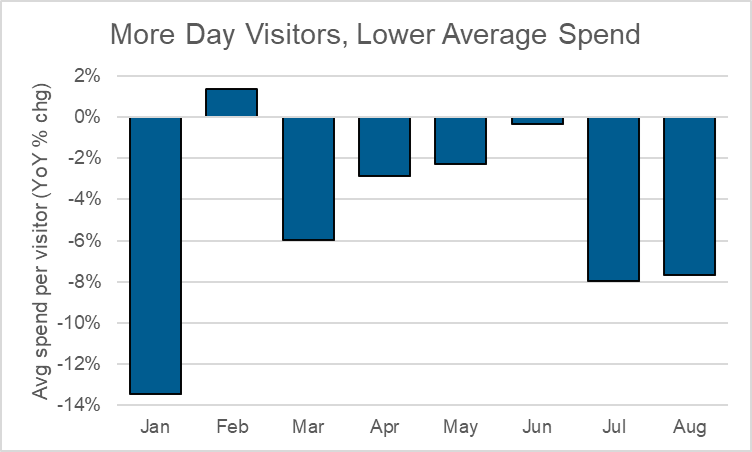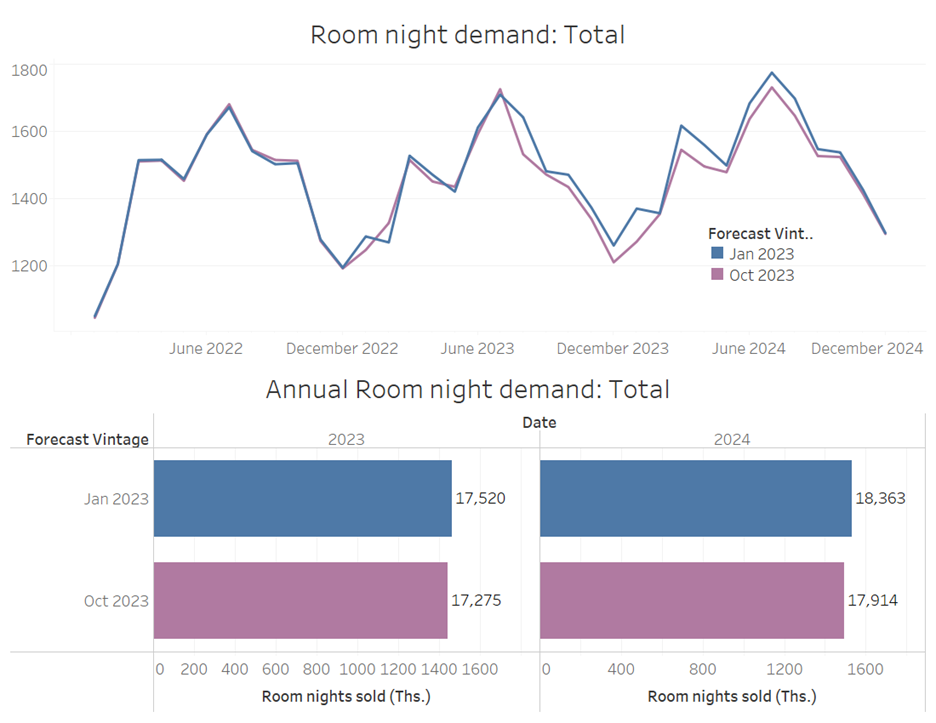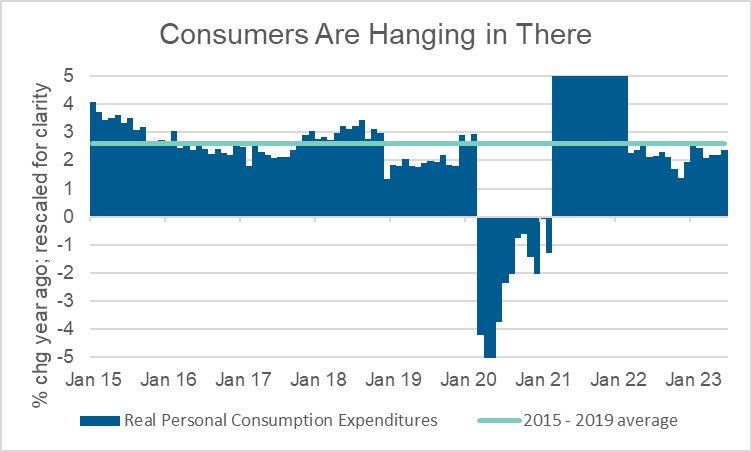Uncharacteristically, weather has worked against San Diego tourism for the majority of 2023. January and February each saw a big boost to hotel room night demand, but only because the Omicron variant wasn’t in the picture to derail travel in 2023 (as it did in early 2022). Average high temperatures have consistently run below average throughout the year, dragging hotel room sales lower at the same time.
Aside from a strong showing in July, when temperatures ran about average and when the ESRI and Comic-Con International conventions were in town, demand for the rest of the year has trailed behind 2022. In fact, were it not for a strong showing in Group and Business travel to the region throughout 2023, room night numbers would be even weaker as leisure demand softened.
Making matters worse, January, March and August were the wettest for San Diego in at least 25 years, owing in big part to Hurricane Hilary in August and a persistent, strong onshore flow exacerbated by El Niño.

Visitation and spending in the region have likewise been spotty. While overall visitor volume is up through August compared with 2022, this has owed in large part to the return of the day visitor. Since day visitors stay for a shorter period, their economic footprint is less than that of overnight visitors. So, even though visitation is up 11%, visitor spending is up a more modest 5.2% year-over-year. That said, San Diego typically sees a 50/50 split between day and overnight visitors, and this year marks a return to trend after an outsize share of overnight visitors arrived in 2022.
Weather also played a role in the mix of visitors: Wet, cooler conditions led the volume of Other Overnight visitors — campers, RV renters and other more outdoor-related accommodation seekers — to drop by double digits through August.

The performance among attractions, museums and other cultural sites has been split this year. Again, with the weather being almost otherworldly by San Diego standards, visitors have been drawn to indoor activities such as the museums at Balboa Park, while the region’s main outdoor attractions have experienced a drop of 800,000 visitors, from 10.1 million through August 2022 to 9.3 million in 2023. By contrast, museums and other arts facilities saw an increase of 200,000 visitors from 1.6 million through August 2022 to 1.8 million this year.
Forecast Changes
The unexpected string of poor weather has led to modest downgrades to the forecasts for this year and next. In January, the forecast anticipated total room nights to run at 17.5 million for calendar year 2023, up from 2022’s 17.0 million. However, as of the October forecast period, that estimate was lowered by roughly 250,000 room nights to 17.3 million. Similarly, 2024 room night sales were lowered from 18.4 million to 17.9 million between the January and October forecasting periods. A good portion of the 2024 downgrade reflects a hedge against recession (more on that below).

However, stronger than expected performance in room rates means very little change to the room revenue forecasts: As of October, we anticipate $3.6 billion in calendar 2023 (up $100 million from January) and $3.8 billion in 2024 (unchanged from January).
Likewise, visitation in calendar 2023 was revised lower by 800,000 to 31.0 million and by 1.4 million in 2024 to 32.0 million, while visitor spending was revised lower by $650 million to $14.3 billion in 2023 and by about $750 million to $14.9 billion in 2024. It’s still worth noting, however, that both years’ numbers are stronger than 2022’s 28.8 million visitors and $13.6 billion in visitor spending.
But … what recession?
The news isn’t all gloomy here. In fact, there is quite a bit of upside risk to the forecasts. Despite the constant chatter of an impending recession (for the past 18 months, mind you), there is absolutely nothing in the data that portends one anytime soon … certainly not in the next few months.
Inflation-adjusted consumer spending — 70% of the U.S. economy — has hung right at or near the pre-pandemic trend since early 2022:

Yes, interest rate hikes will sting a bit, but corporate debt levels as a share of equity are near historic lows, lessening the blow:

Not to mention, household net worth is at an all-time high, consumers still have nearly $1 TRILLION left in excess savings, GDP is looking to come in at nearly 4% annualized for the third quarter, inflation has cooled substantially since last year, and on and on. There simply isn’t the catalyst to tip the economy into a recession at this point.
Bottom line
Yes, San Diego tourism has seen a downshift in 2023. But this owes almost entirely to bad luck with weather rather than any sort of economic disruption. Overall, once the weather turns back around, we can expect to see sunnier days ahead, both literally and figuratively.
Leave a Reply